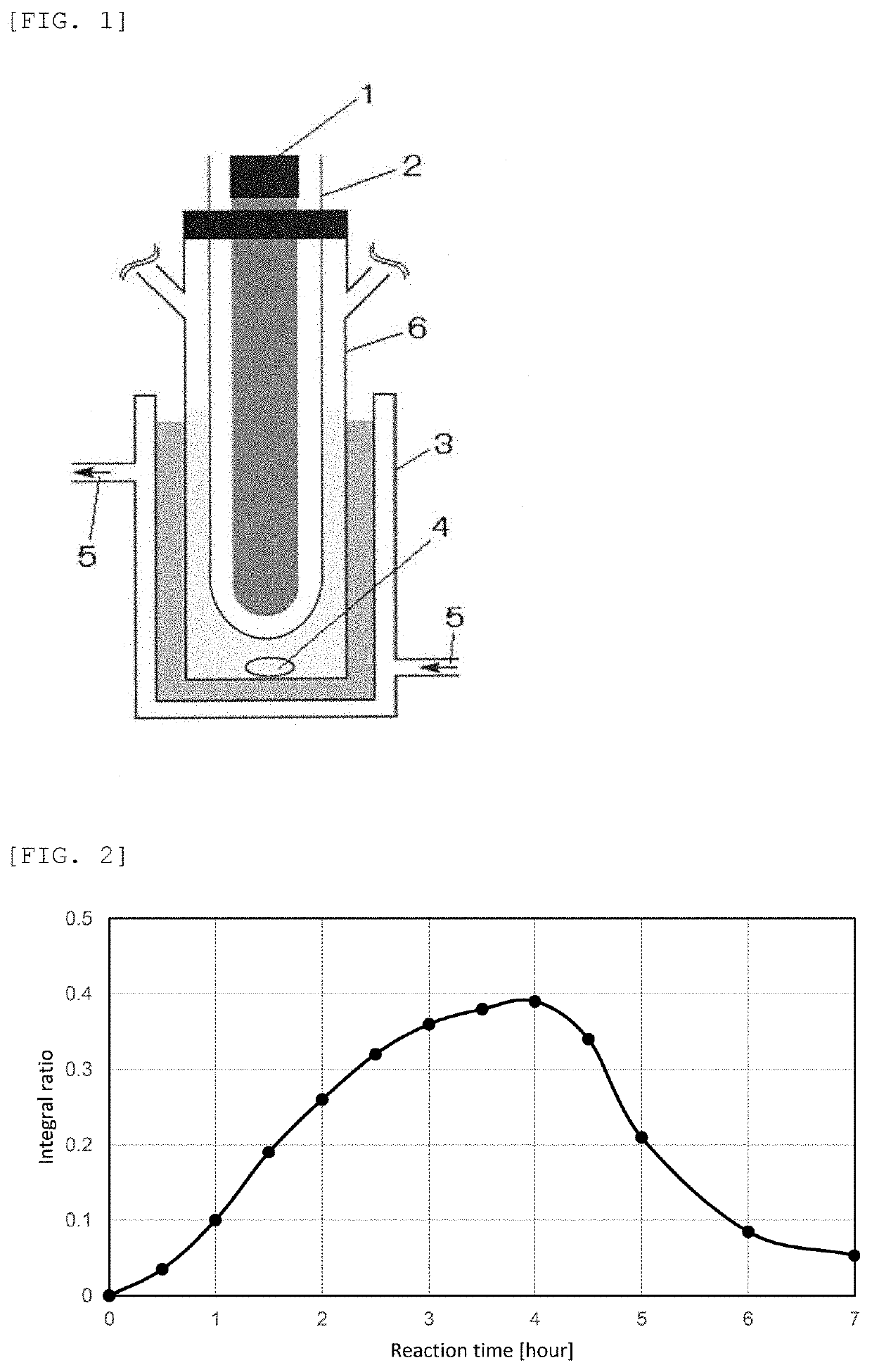Method for producing carbonate derivative
- Summary
- Abstract
- Description
- Claims
- Application Information
AI Technical Summary
Benefits of technology
Problems solved by technology
Method used
Image
Examples
examples
[0121]Hereinafter, the examples are described to demonstrate the present invention more specifically, but the present invention is in no way restricted by the examples, and the examples can be appropriately modified to be carried out within a range which adapts to the contents of this specification. Such a modified example is also included in the range of the present invention.
examples 1 to 4
phatic Alcohol
[0122]
[0123]A quartz glass jacket having a diameter of 30 mm was inserted into a cylindrical reaction vessel having a diameter of 42 mm and a volume of 100 mL, and a low pressure mercury lamp (“UVL20PH-6” manufactured by SEN Light, 20 W, 2. In the reaction vessel, purified chloroform (20 mL, 250 mmol) and an aliphatic alcohol described in Table 1 (250 mmol) were added and mixed under stirring. Oxygen gas was blown into the stirred reaction mixture at a flow rate of 0.5 L / min at 50° C. to cause bubbling, and a high energy light containing UV-C was irradiated. Then, the reaction mixture was analyzed by 1H NMR and the yield was calculated. The result is shown in Table 1.
TABLE 1Alcohol(R—OH)ReactionYieldExampleRtimeCarbonateAldehyde1Ethyl61 h39%19%2n-Propyl82 h29%18%3Isopropyl94 h12% 9%4n-Butyl82 h16%18%
[0124]It was experimentally demonstrated by the result shown in Table 1 that even when a base is not used, a carbonate can be easily synthesized from chloroform and an alco...
examples 5 to 7
hylene Carbonate
[0125]In the reaction vessel of the reaction system used in Example 1, purified chloroform (16 mL, 200 mmol) and ethylene glycol (5.6 mL, 100 mmol) were added. Oxygen gas was blown into the stirred mixture at a flow rate of 0.5 L / min at the temperature described in Table 2 to cause bubbling, and a high energy light containing UV-C was irradiated.
[0126]Water and dichloromethane were added to the reaction mixture after 8 hours, and the aqueous phase and the organic phase were separated. The organic phase was concentrated at 80° C. under reduced pressure to obtain ethylene carbonate as white powder. The yield is shown in Table 2.
TABLE 2ExampleReaction TemperatureYield5 0° C.40%620° C.87%725° C.70%
[0127]In addition, the reaction temperature was changed to 50° C., samples were collected from the reaction mixture every 30 minutes up to 6 hours and analyzed by 1H NMR to obtain an integral ratio of a peak area of the methylene group proton in the ethylene carbonate to the me...
PUM
| Property | Measurement | Unit |
|---|---|---|
| Substance count | aaaaa | aaaaa |
| Wavelength | aaaaa | aaaaa |
| Wavelength | aaaaa | aaaaa |
Abstract
Description
Claims
Application Information
 Login to View More
Login to View More - R&D
- Intellectual Property
- Life Sciences
- Materials
- Tech Scout
- Unparalleled Data Quality
- Higher Quality Content
- 60% Fewer Hallucinations
Browse by: Latest US Patents, China's latest patents, Technical Efficacy Thesaurus, Application Domain, Technology Topic, Popular Technical Reports.
© 2025 PatSnap. All rights reserved.Legal|Privacy policy|Modern Slavery Act Transparency Statement|Sitemap|About US| Contact US: help@patsnap.com



